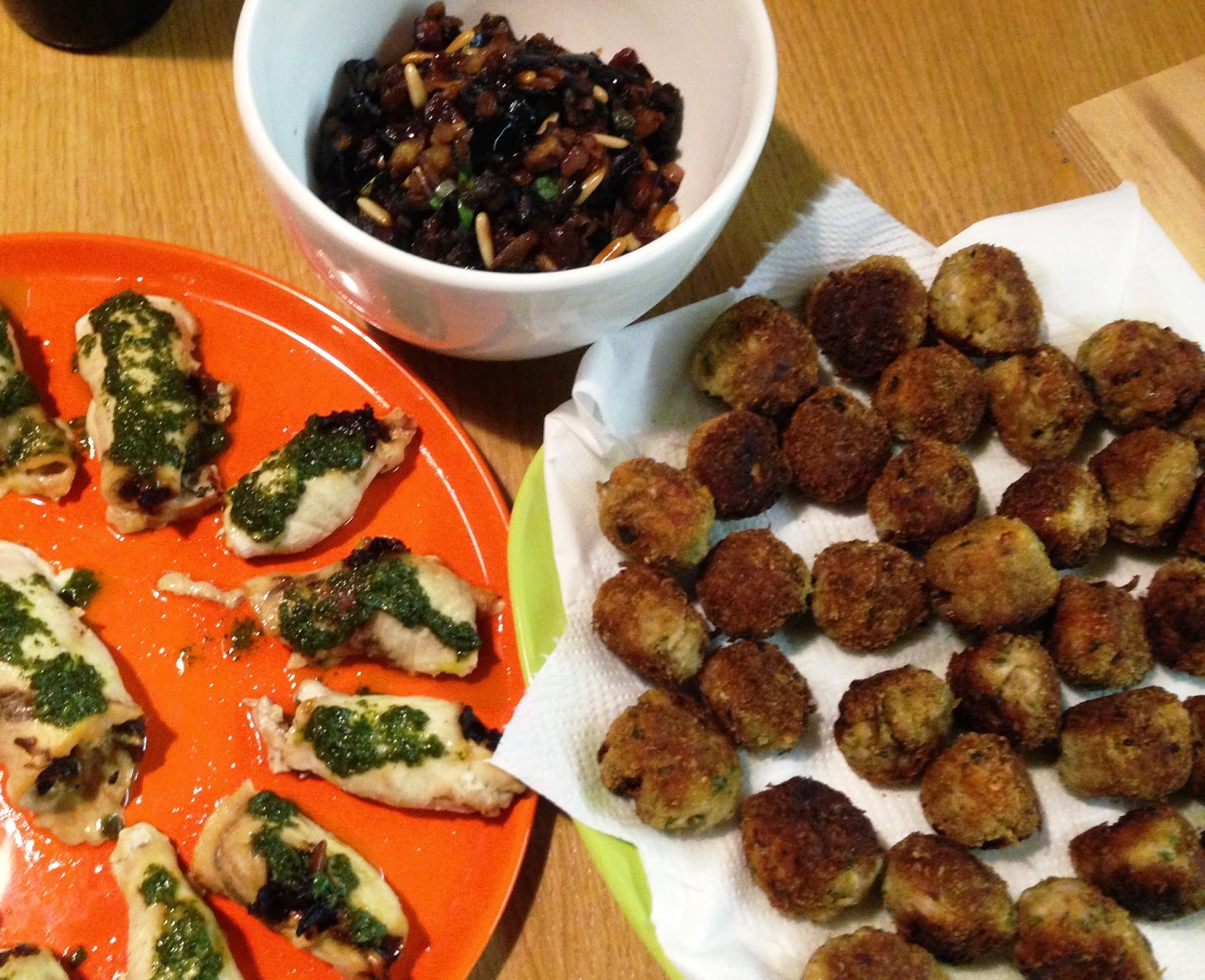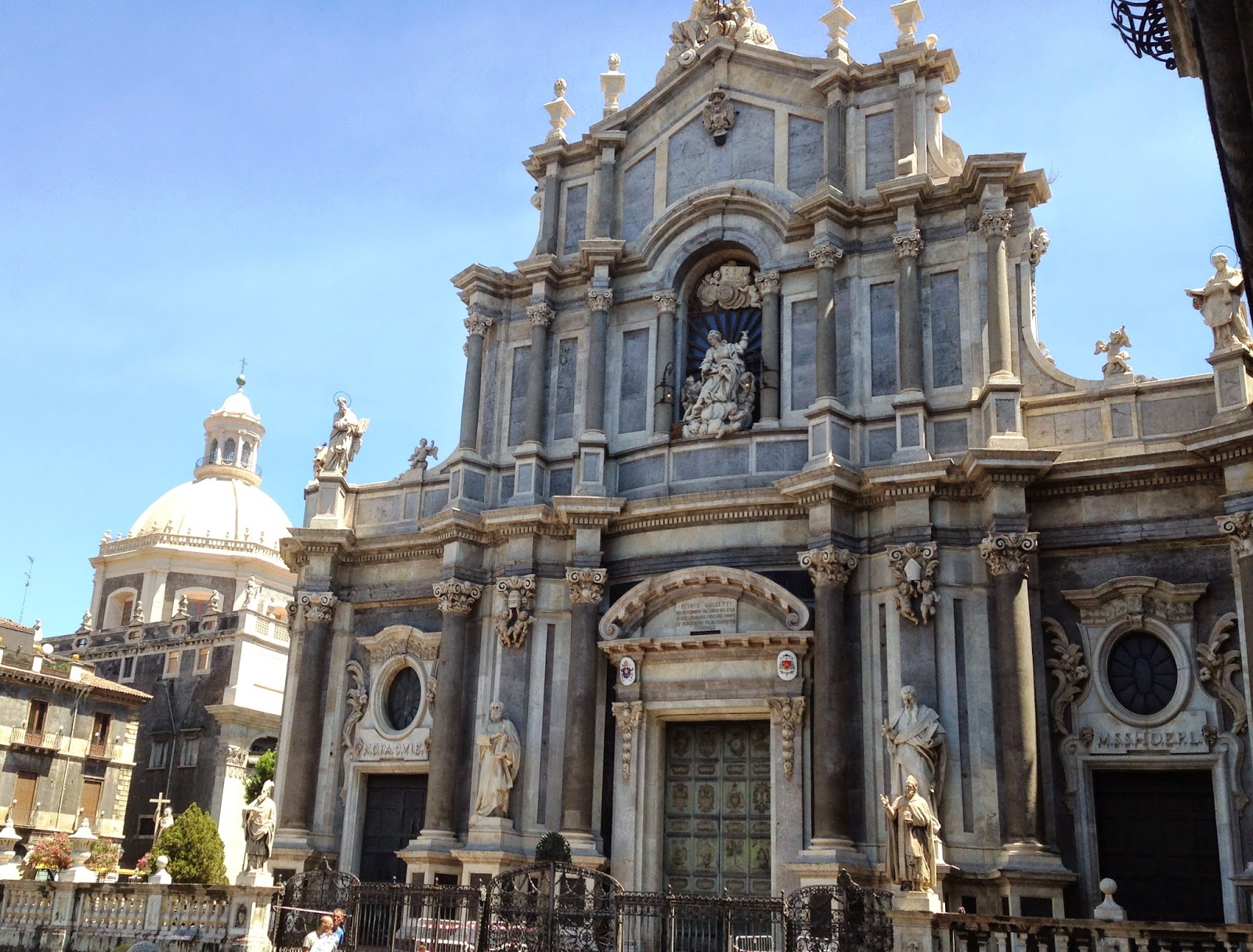Catania is Sicily's second-largest city, with 300,000 residents in the city proper and 1 million people in the metro area. Much of the city's beautiful architecture, like that of the surrounding Val di Noto, is barocco (baroque) -- ornate and expressive with detailed facades and embedded sculpture. Like its surrounding towns in the Noto Valley, Catania was rebuilt after the great earthquake of 1693, and so these towns were redesigned in the popular style of the era, which happened to be Sicilian baroque, disseminated from its origins in Rome. The fish market's fortunate positioning places its entrance just off the Piazza del Duomo, with the gorgeous pale grey-blue facade of its baroque church. The market has been in its current location since the beginning of the 19th century, when the galleria for the market was dug from the site of the historic center's 16th century city walls.
Once you enter the market, all the tranquility and beauty you just witnessed in the Duomo and the nearby fountain turn to chaos and shouting, hawking and salesmanship and showmanship. That Sicily was once the provenance of the Arab world, (and its proximity to North Africa) can be felt here, viscerally. The mercato di pesce is part Italian market, part souk. The fishmongers are yelling pleas of "buy my fish, it's the best!" and "There is no fish fresher than mine!" and some say simply "Signora, signora, what can I offer you? Best price just for you!" On the whole, these fishmongers are selling more or less identical products. As you wade through the fish stalls (and I do mean wade: wearing wellies is a better idea than wearing sandals or flip-flops), the prices are more or less on par, so the only thing separating these stalls is the quality of the merchandise...and the marketing skills of the sellers. In the photo here, you see some of the most typical seafood for sale: anchovies and sardines, and shrimp of all sizes, including the delicate and delicious gambero rosso, or red shrimp from the Gulf of Catania, best eaten raw. There are triglie and branzino and orata (various Mediterranean white-fleshed fish), and calamari and octopus.
 There is famously fresh tuna in these waters, much of which comes from the west and north coasts of Sicily, between the island and Calabria on the peninsula -- most of which either gets cooked and canned sott'olio (in oil) for Sicily's famous high quality preserved tuna fish, or sold to Japan, where its vertiginous prices are paid by the Japanese sushi and sashimi purchasers. But you can find it here, its flesh a fresh semi-translucent ruby red. And you can find its white-fleshed steakfish friend, pesce spada, or swordfish, all over Sicily. It's particularly good here. I purchased some for our dinner later that night, to be composed of entirely market-bought items. I also bought some beautiful whole calamari.
There is famously fresh tuna in these waters, much of which comes from the west and north coasts of Sicily, between the island and Calabria on the peninsula -- most of which either gets cooked and canned sott'olio (in oil) for Sicily's famous high quality preserved tuna fish, or sold to Japan, where its vertiginous prices are paid by the Japanese sushi and sashimi purchasers. But you can find it here, its flesh a fresh semi-translucent ruby red. And you can find its white-fleshed steakfish friend, pesce spada, or swordfish, all over Sicily. It's particularly good here. I purchased some for our dinner later that night, to be composed of entirely market-bought items. I also bought some beautiful whole calamari.
I was ecstatic to find neonati, teeny-tiny "just born" whitings that, grouped together by the hundreds, would make the base for polpetti -- little fish "meatballs." Other interesting items in the fish market include bottarga (salt-cured tuna roe) and ricci di mare, sea urchin. Such items are typical in these parts of southern Italy, and we'd been gorging ourselves on pasta with sea urchin and pasta with bottarga since we arrived down south a week earlier. So I went for something a little different. With my fish gathered and a menu coming together in my head, I passed by a few stalls in the fruit and vegetable part of the market, and then we were off for a swim in the sea just down the street from our apartment. And then, and only then...to cook!
 What did I make at the end of the day? My take on various Sicilian specialties and flavors, using locally purchased ingredients, of course. I made those polpetti with neonati, bread crumbs, egg, herbs, and spices, and deep fried them. I took the gorgeous swordfish from the fish market and sliced the steaks as thin as possible, then stuffed them with an eggplant caponata (sweet-and-sour ratatouille) I made from market vegetables, and rolled that into involtini. I made a sort of salsa verde (green sauce) with basil, mint, and parsley from the herb plants on our apartment's terrace, and spread that on top of the oven-cooked swordfish.
What did I make at the end of the day? My take on various Sicilian specialties and flavors, using locally purchased ingredients, of course. I made those polpetti with neonati, bread crumbs, egg, herbs, and spices, and deep fried them. I took the gorgeous swordfish from the fish market and sliced the steaks as thin as possible, then stuffed them with an eggplant caponata (sweet-and-sour ratatouille) I made from market vegetables, and rolled that into involtini. I made a sort of salsa verde (green sauce) with basil, mint, and parsley from the herb plants on our apartment's terrace, and spread that on top of the oven-cooked swordfish.
Cin-cin to Sicilia and her gorgeous culinary gifts!
Footnote: If you're not lucky enough to be staying in an apartment with a kitchen, or aren't much of a home cook, there are some terrific, highly-recommended restaurants within a stone's throw (and sometimes inside) of the fish market. Three of these are:
- Ambasciata del Mare
- Osteria Antica Mare
- Trattoria La Paglia





No comments:
Post a Comment